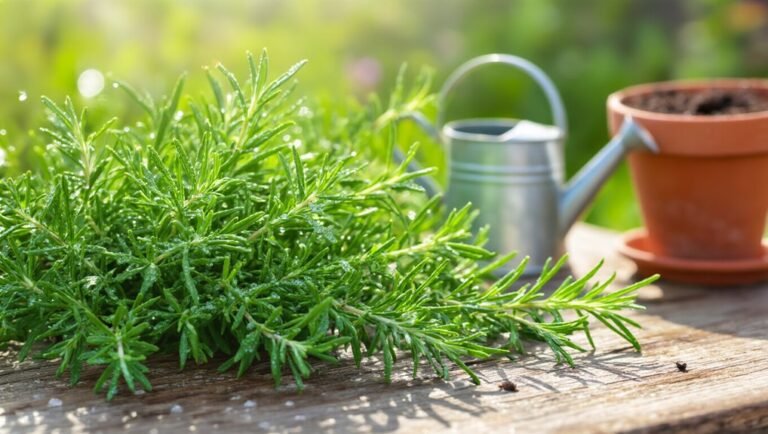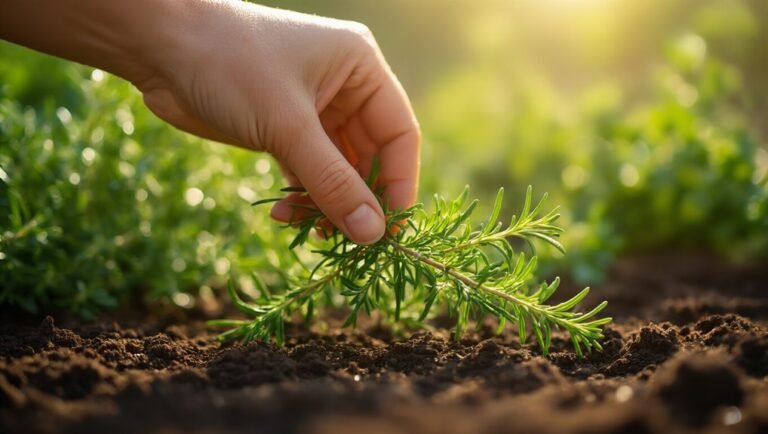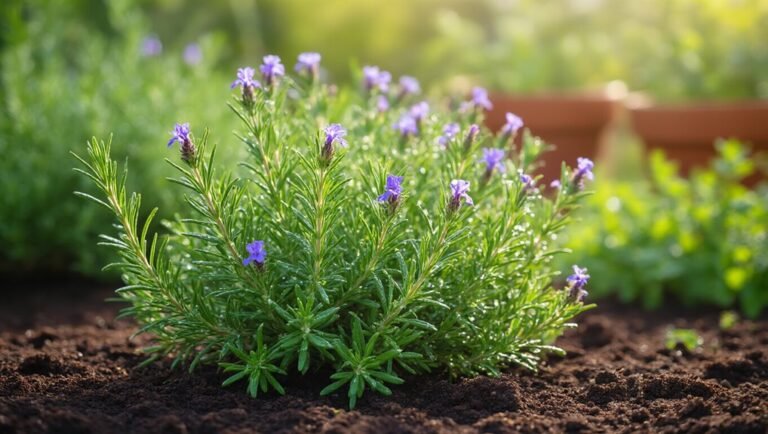To create the perfect DIY potting soil, you need a balanced mix of three key components. Use one part organic matter, like compost, one part aeration material, such as perlite, and one part drainage material, like coconut coir. This 1:1:1 ratio provides essential nutrients, helps with drainage, and retains moisture. Adjust the blend based on your plants’ specific needs for optimal growth and health. There’s much more you can discover about customizing your soil!
Key Takeaways
- Use a balanced 1:1:1 ratio of peat moss or coconut coir, perlite or vermiculite, and compost or aged bark for optimal growth.
- Adjust the mix based on plant needs, increasing drainage materials for succulents or organic matter for moisture-loving plants.
- Incorporate plant fertilizer tablets to provide essential nutrients over time and support healthy growth.
- Test soil periodically to ensure it meets the pH and nutrient requirements of your specific plants.
- Research and utilize gardening resources for tailored advice on customizing potting soil for different plant types.
Understanding the Components of Potting Soil
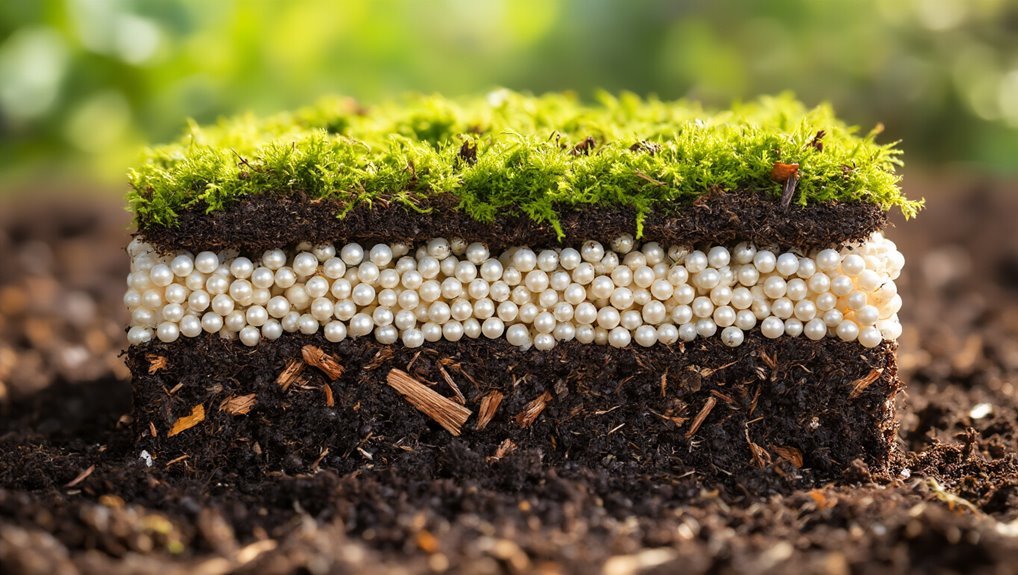
When you’re creating your own potting soil, it’s essential to understand its key components. The primary ingredients you need are a base material, organic matter, and drainage materials.
The base material, often peat moss or coconut coir, provides structure and moisture retention. Next, you’ll want to add organic matter, like compost or aged manure, which enriches the soil with nutrients. Using compost bins is an excellent way to produce your own nutrient-rich compost right at home.
Lastly, incorporating drainage materials, such as perlite or vermiculite, ensures proper aeration and prevents waterlogging. Each component plays a crucial role in creating a balanced mix that supports healthy plant growth. For gardeners looking for a ready-made option, many garden soil blends are available that combine these essential elements for optimal plant performance.
The Ideal Ratios for Potting Soil Mix
Finding the right ratios for your potting soil mix is crucial for optimal plant health. A well-balanced mix typically consists of three main components: organic matter, aeration material, and drainage material. To further enhance your soil mix, consider supplementing with plant fertilizer tablets to provide essential nutrients over time.
Aim for a ratio of 1:1:1, meaning equal parts of each component. For instance, combine one part peat moss or coconut coir for organic matter, one part perlite or vermiculite for aeration, and one part compost or aged bark for drainage.
This blend provides your plants with the nutrients, moisture retention, and airflow they need to thrive. Adjust these ratios slightly based on your specific plants’ needs, but keeping it simple with this 1:1:1 ratio will set a solid foundation for your potting soil mix. If you’re just starting seeds, using seed starting kits can help ensure your young plants have the best possible beginning with a balanced soil mix.
Tips for Customizing Your Potting Soil Blend
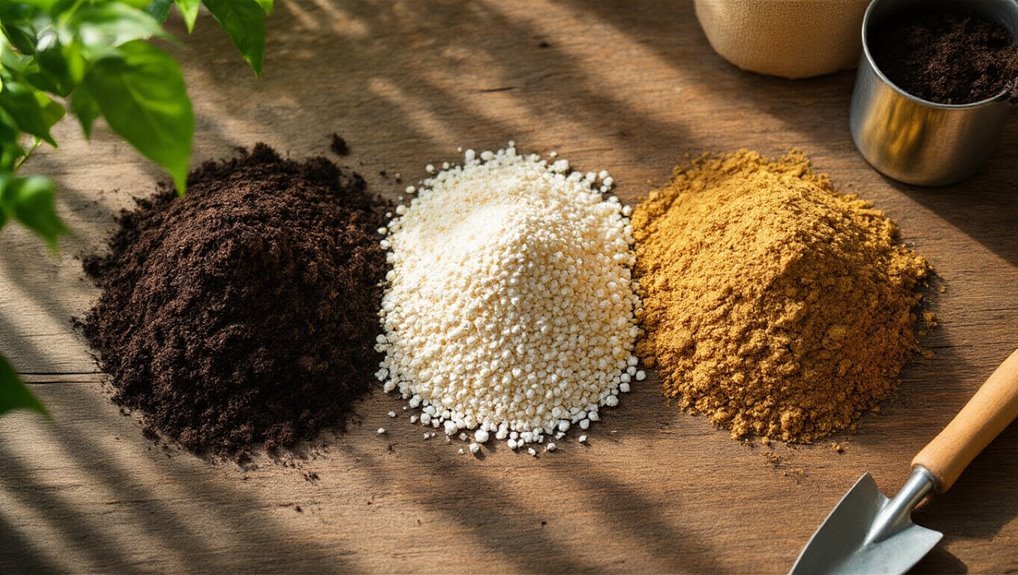
Customizing your potting soil blend allows you to cater to the specific needs of your plants while building on the solid foundation of the 1:1:1 ratio.
Start by assessing your plants’ requirements; some need more drainage, while others thrive in moisture-retaining mixes. For succulents, consider increasing the amount of perlite or sand to enhance drainage. Incorporating the right plant food into your blend can further support healthy growth and nutrient uptake.
If you’re potting tropical plants, add more organic matter like compost for moisture retention. You can also adjust the pH by adding lime or sulfur, depending on your plants’ preferences.
Remember to test your soil occasionally to ensure it meets your plants’ needs. With these tips, you’ll create a customized blend that promotes robust growth and vibrant health. For more expert advice and inspiration, consider consulting gardening books that offer essential reads for every gardening enthusiast.
Frequently Asked Questions
Can I Use Garden Soil Instead of Potting Soil?
You can use garden soil, but it often compacts and lacks drainage, which can hinder plant growth. Instead, consider mixing it with other materials to improve texture and nutrient content for better results.
How Often Should I Replace Potting Soil?
Like a tree shedding old leaves, you should replace potting soil every 12 to 18 months. This refreshes nutrients, allowing your plants to thrive. Keep an eye on soil quality, and don’t hesitate to refresh!
What Containers Are Best for Potting Soil?
When choosing containers for potting soil, opt for those with drainage holes. Materials like terracotta, plastic, or metal work well. Ensure the size fits your plant’s roots, allowing for proper growth and moisture retention.
How Do I Store Leftover Potting Soil?
After a weekend gardening binge, you’ve got leftover potting soil. Store it in a sealed container, keeping it cool and dry. Label it for easy access, and it’ll stay fresh for your next planting adventure!
Can I Use Expired Ingredients in My Potting Soil?
You shouldn’t use expired ingredients in your potting soil. They may lose nutrients or introduce harmful pathogens. Fresh ingredients ensure healthy plant growth, so stick with quality materials for the best results in your gardening projects.
Conclusion
Now that you know the components and ideal ratios for potting soil, don’t settle for mediocre mixes that stifle your plants. Instead, embrace the power of customization to create a blend that thrives. Just like a chef perfects a recipe, you can tailor your potting soil to meet your plants’ needs. With the right mix, you’ll watch your garden flourish, transforming ordinary pots into vibrant ecosystems bursting with life. So, dig in and get mixing!
